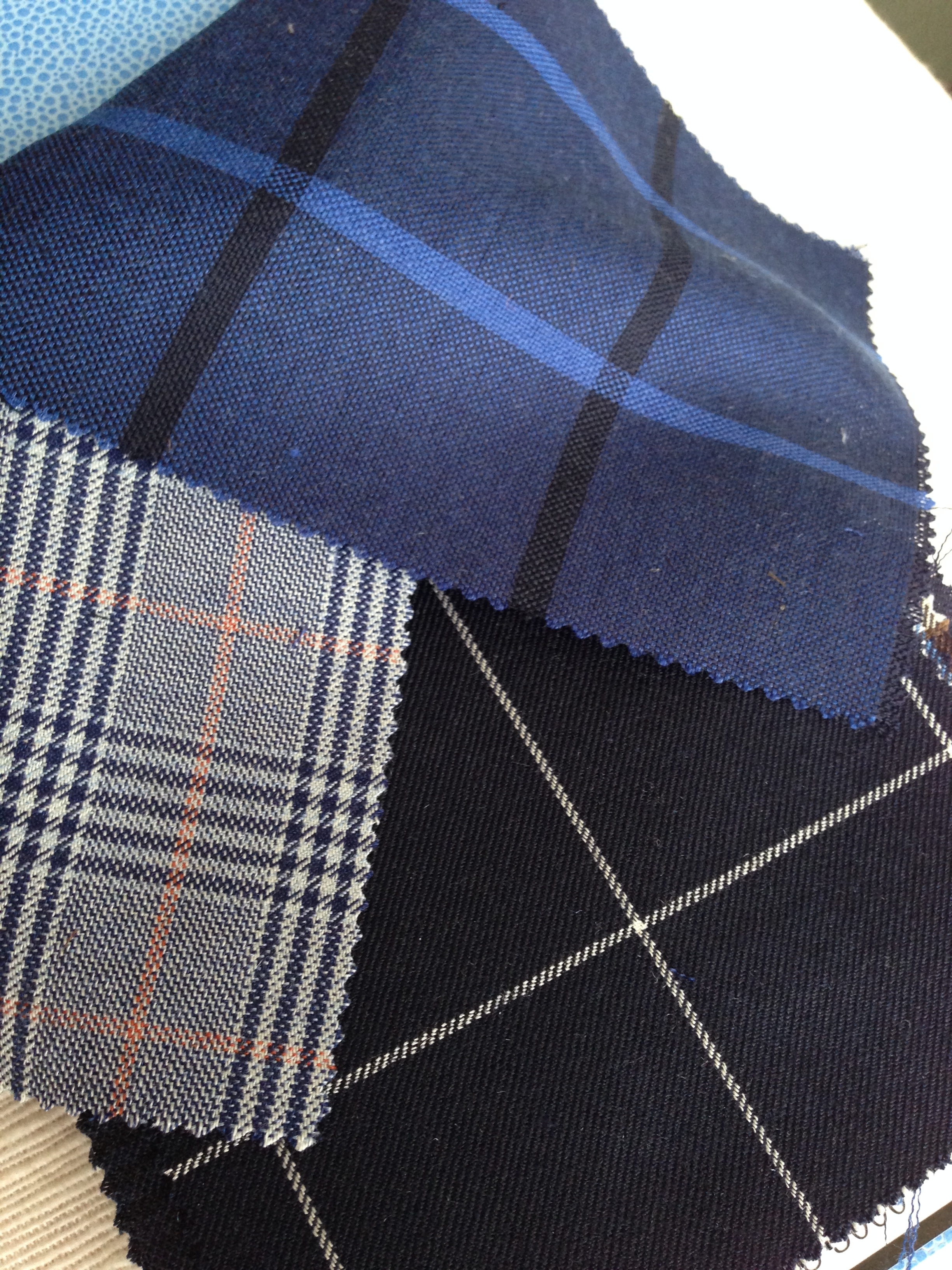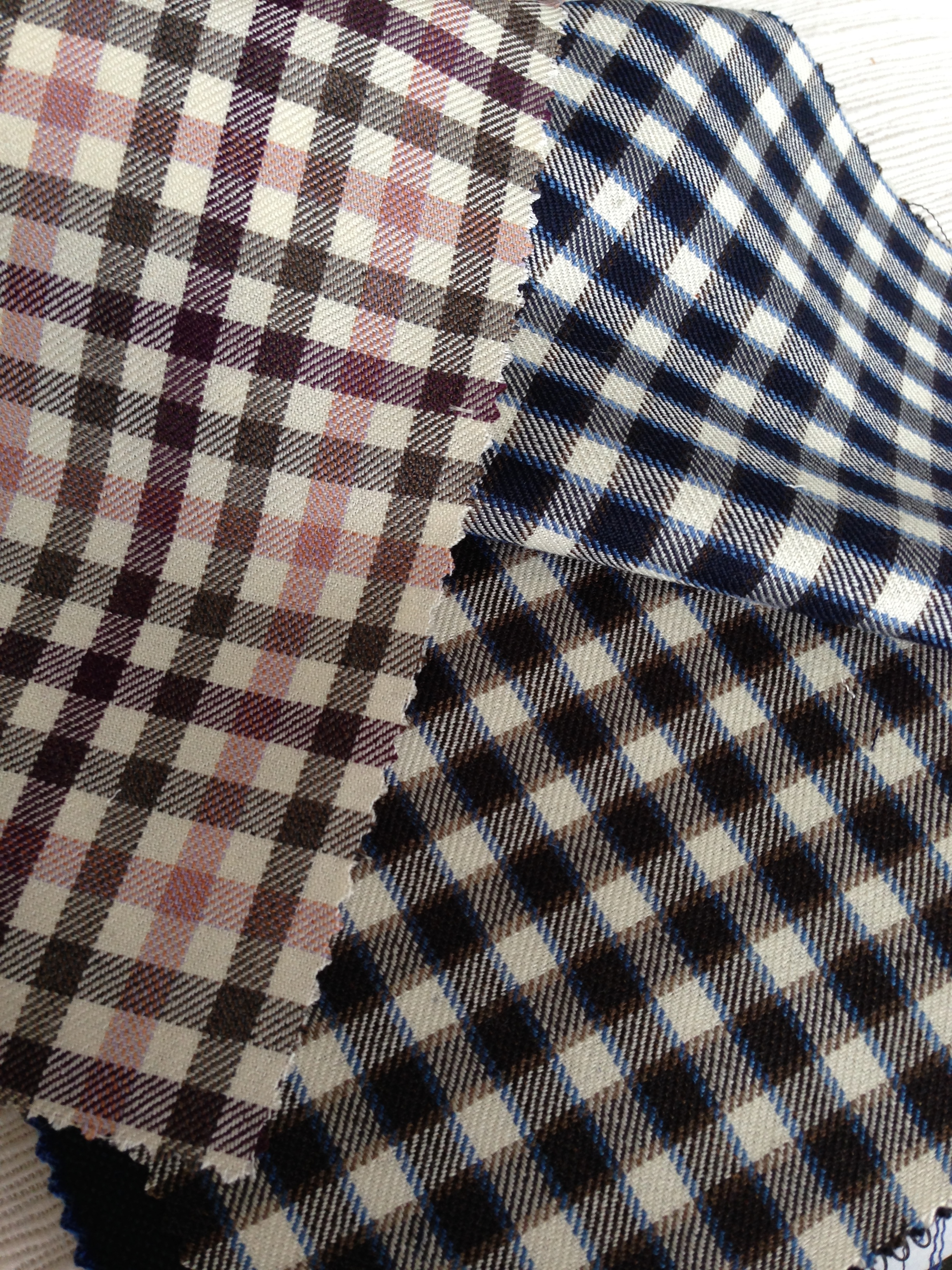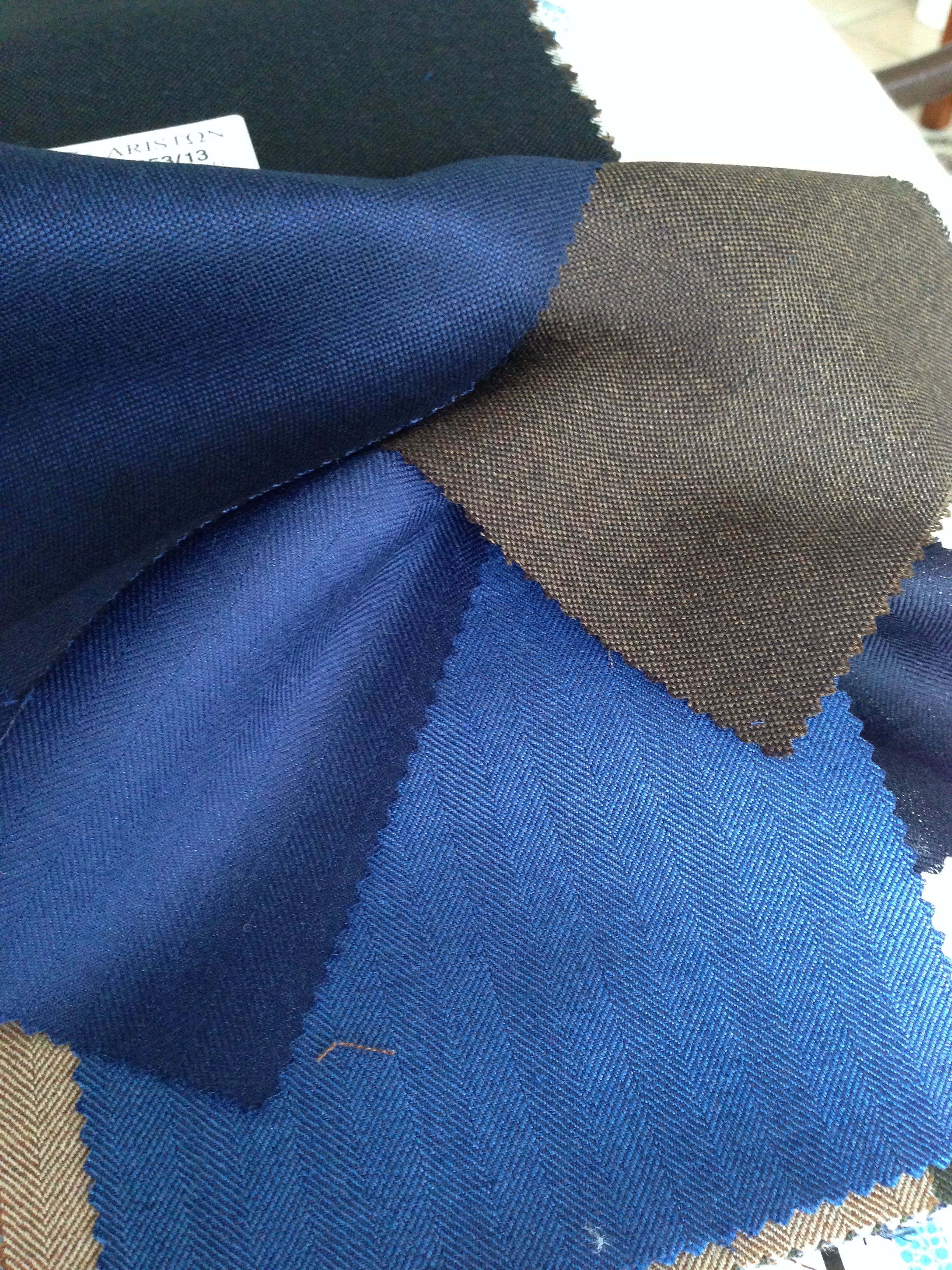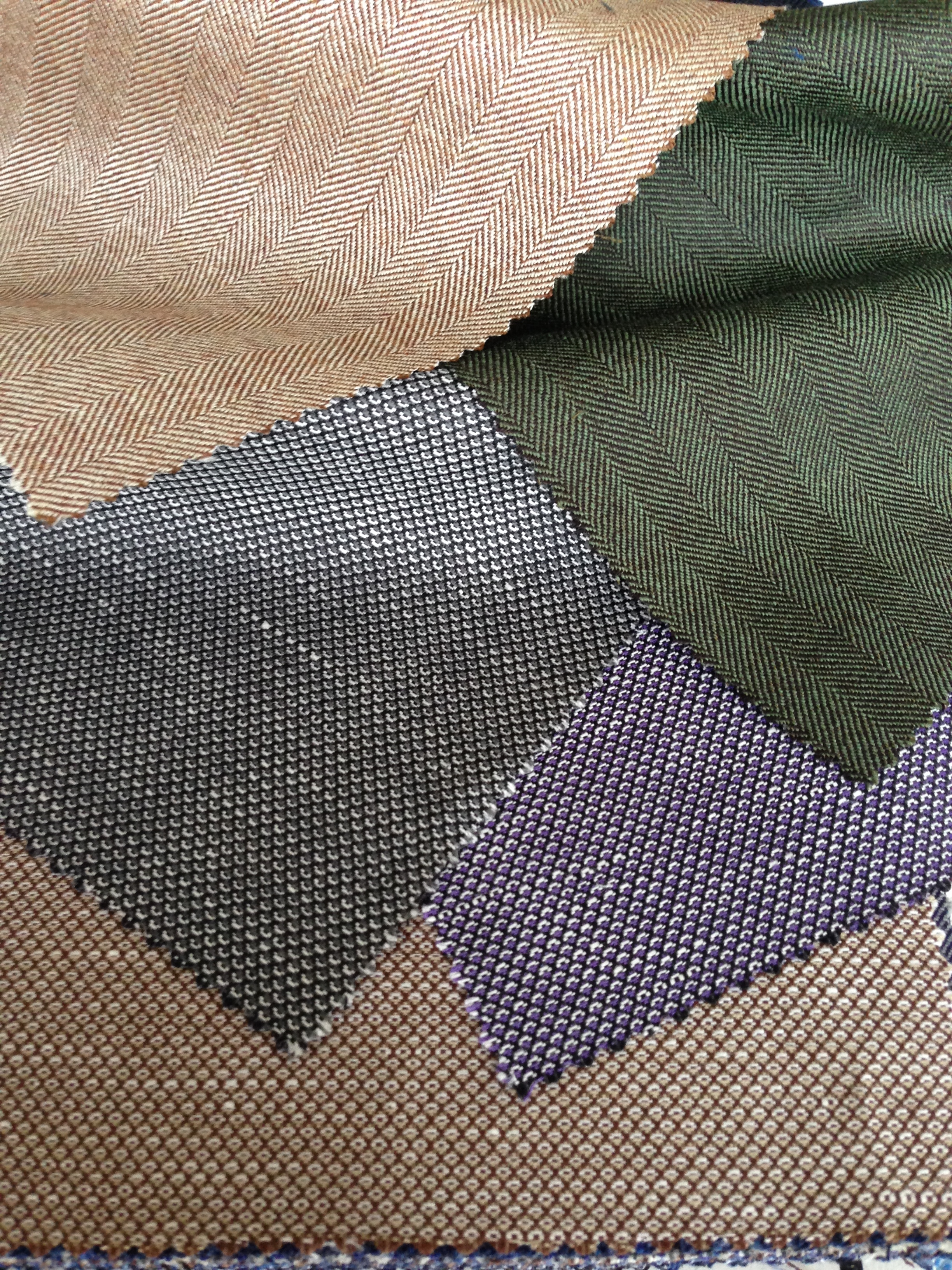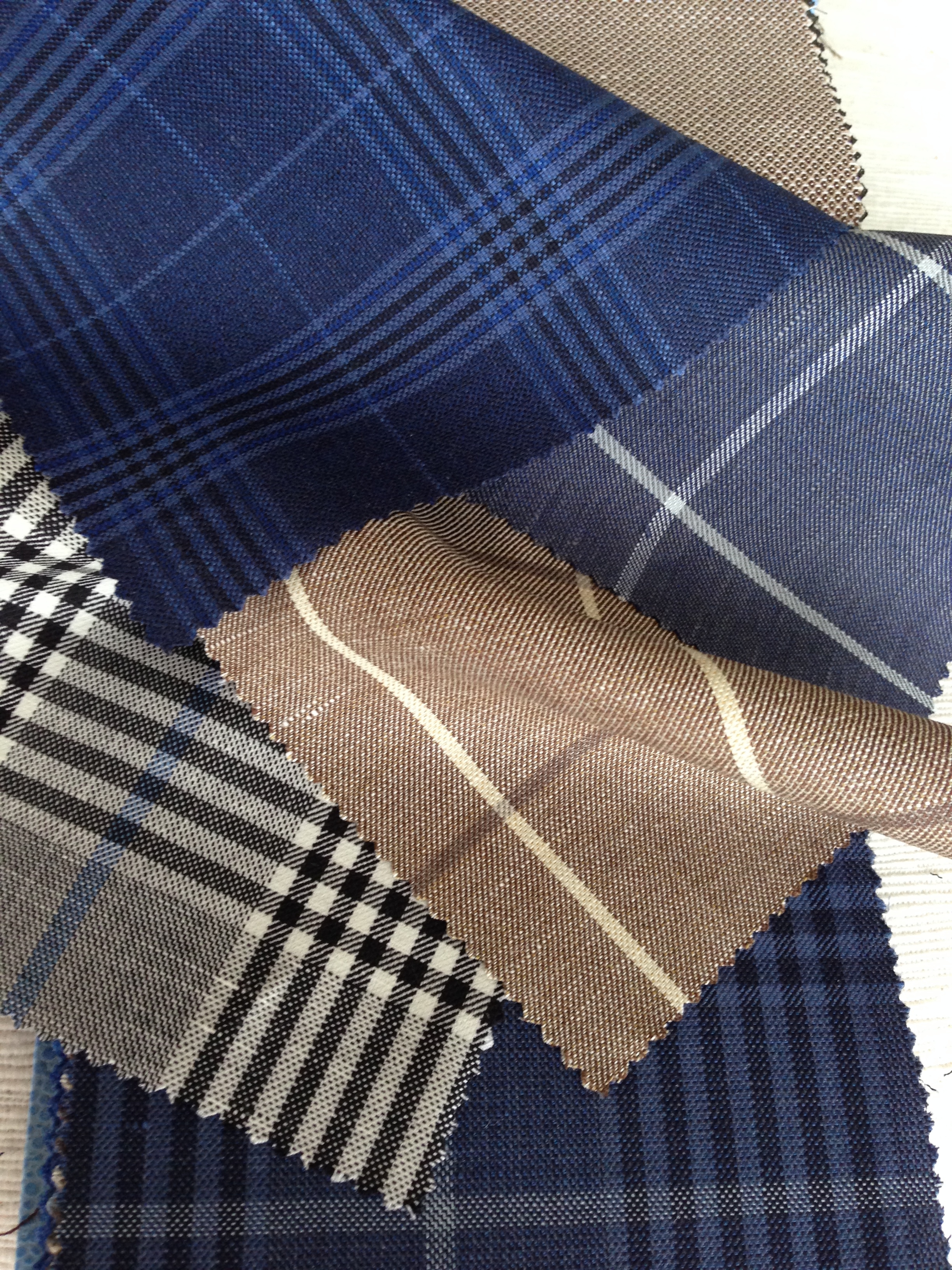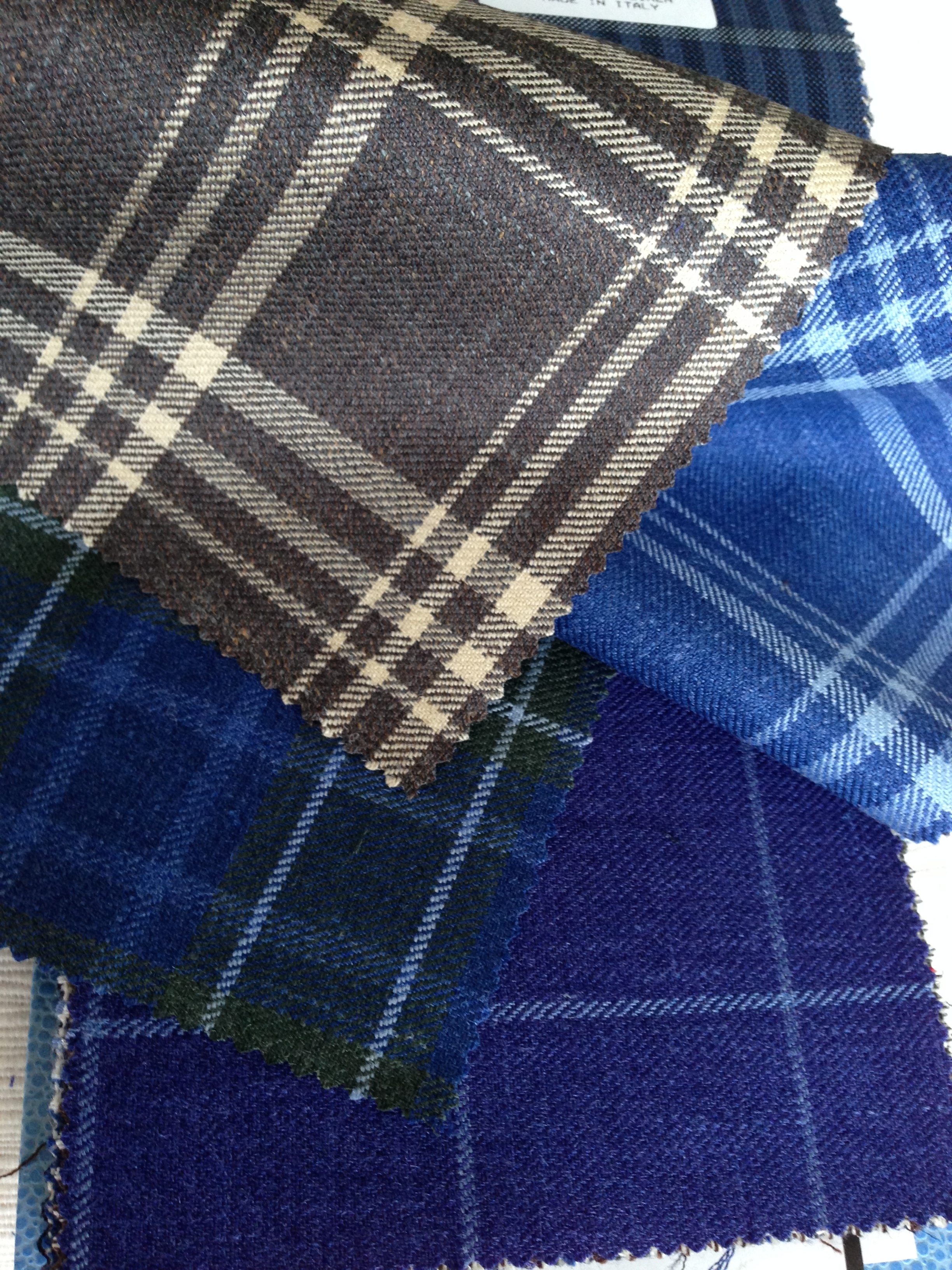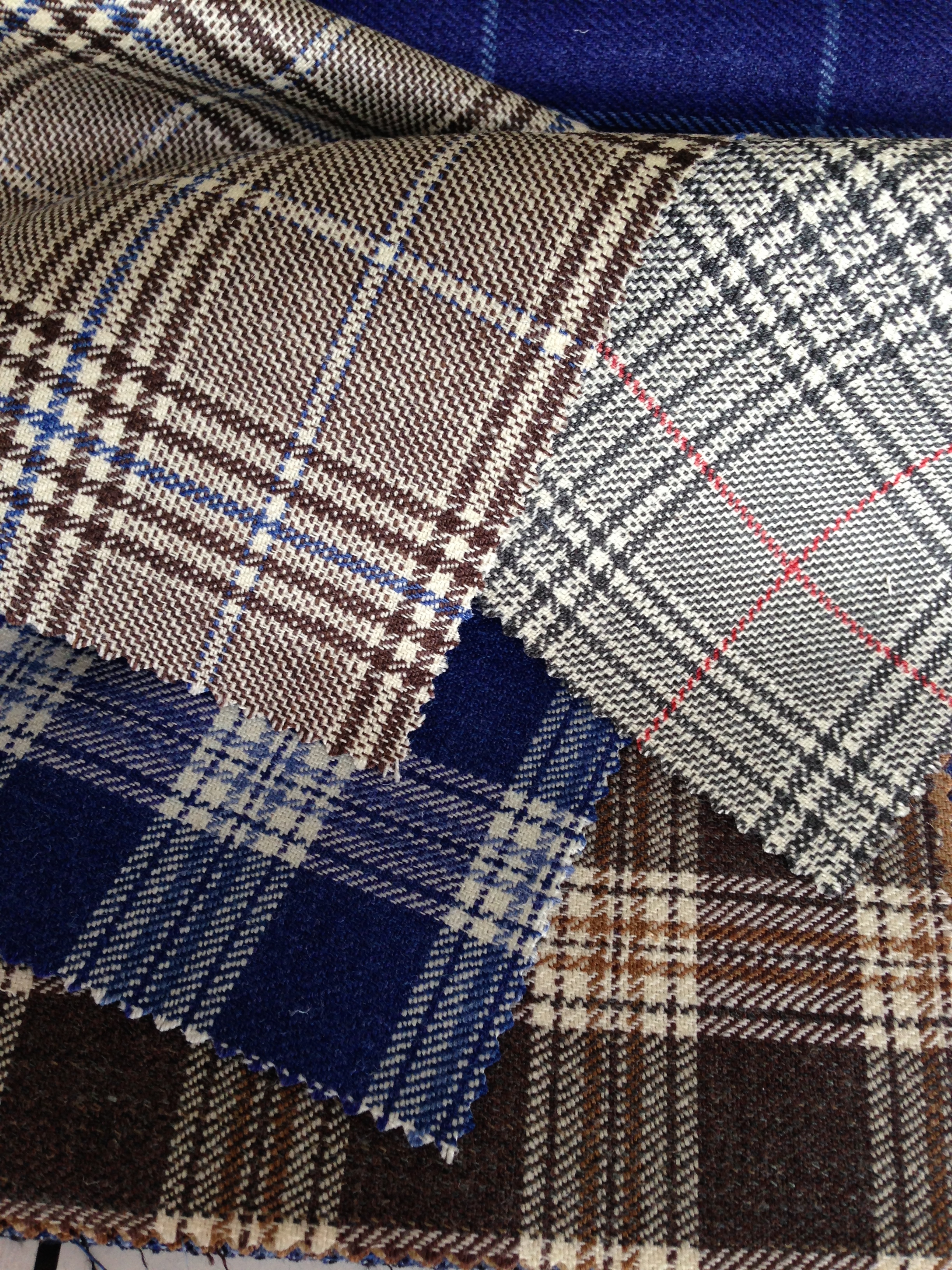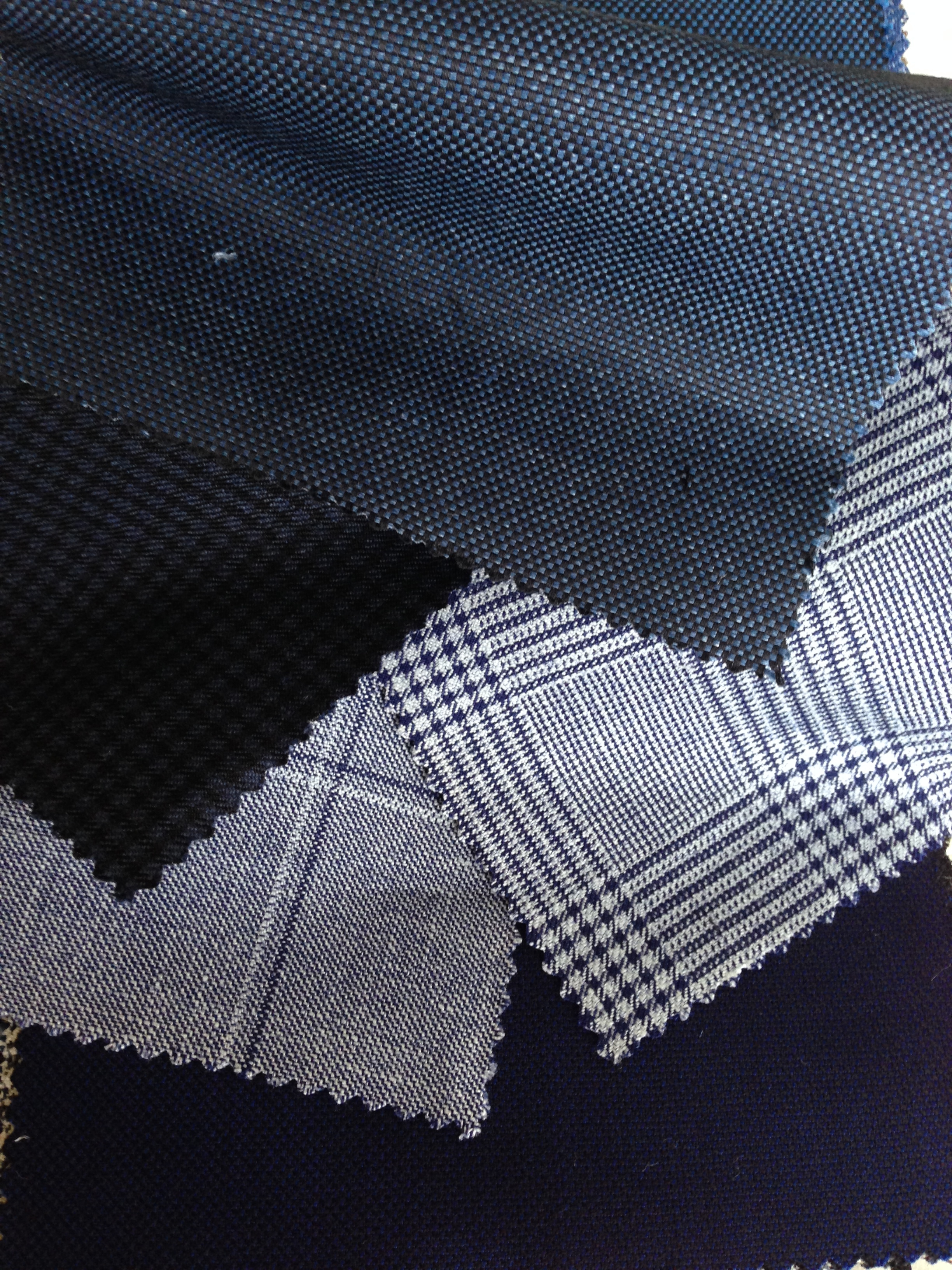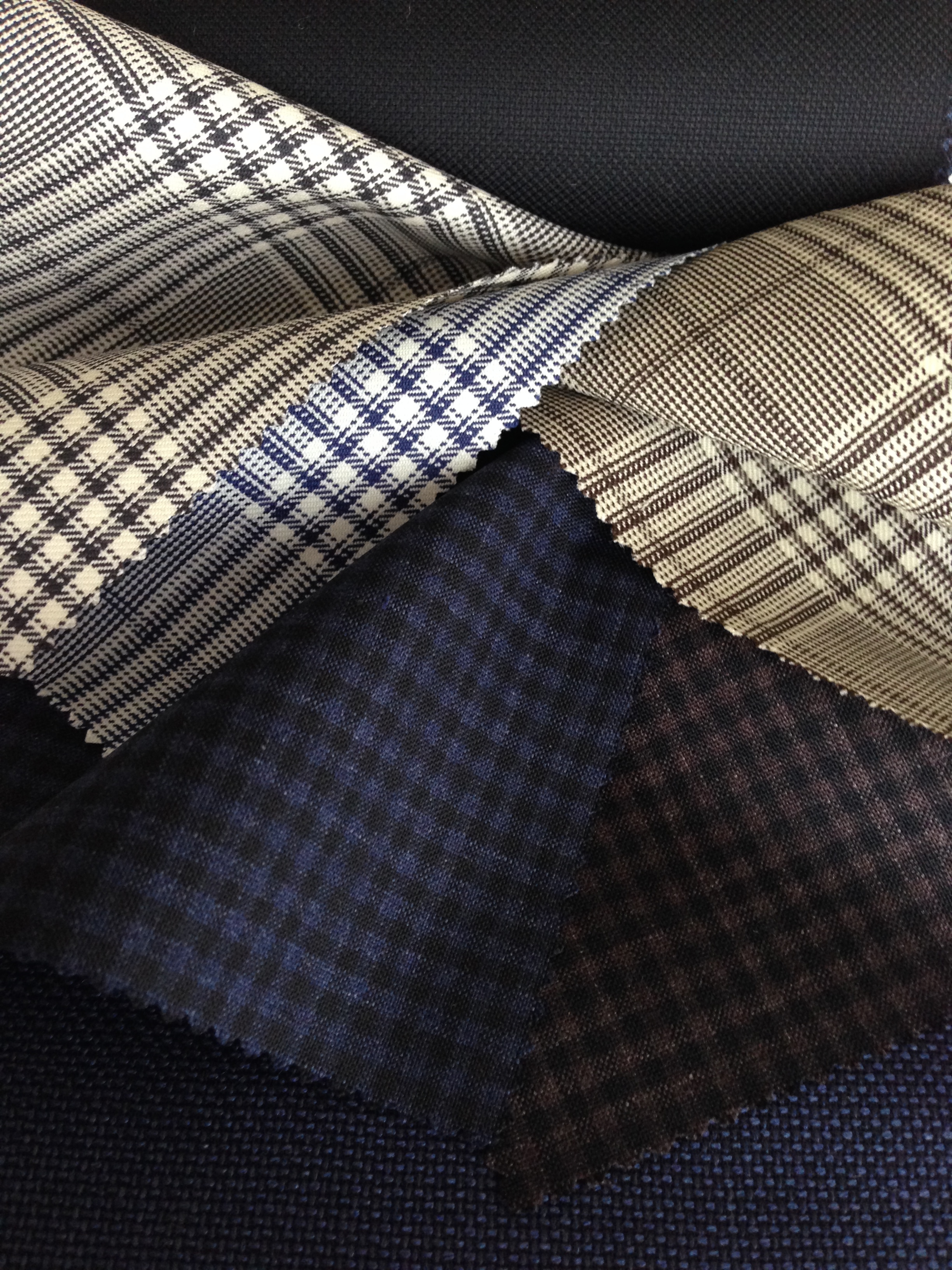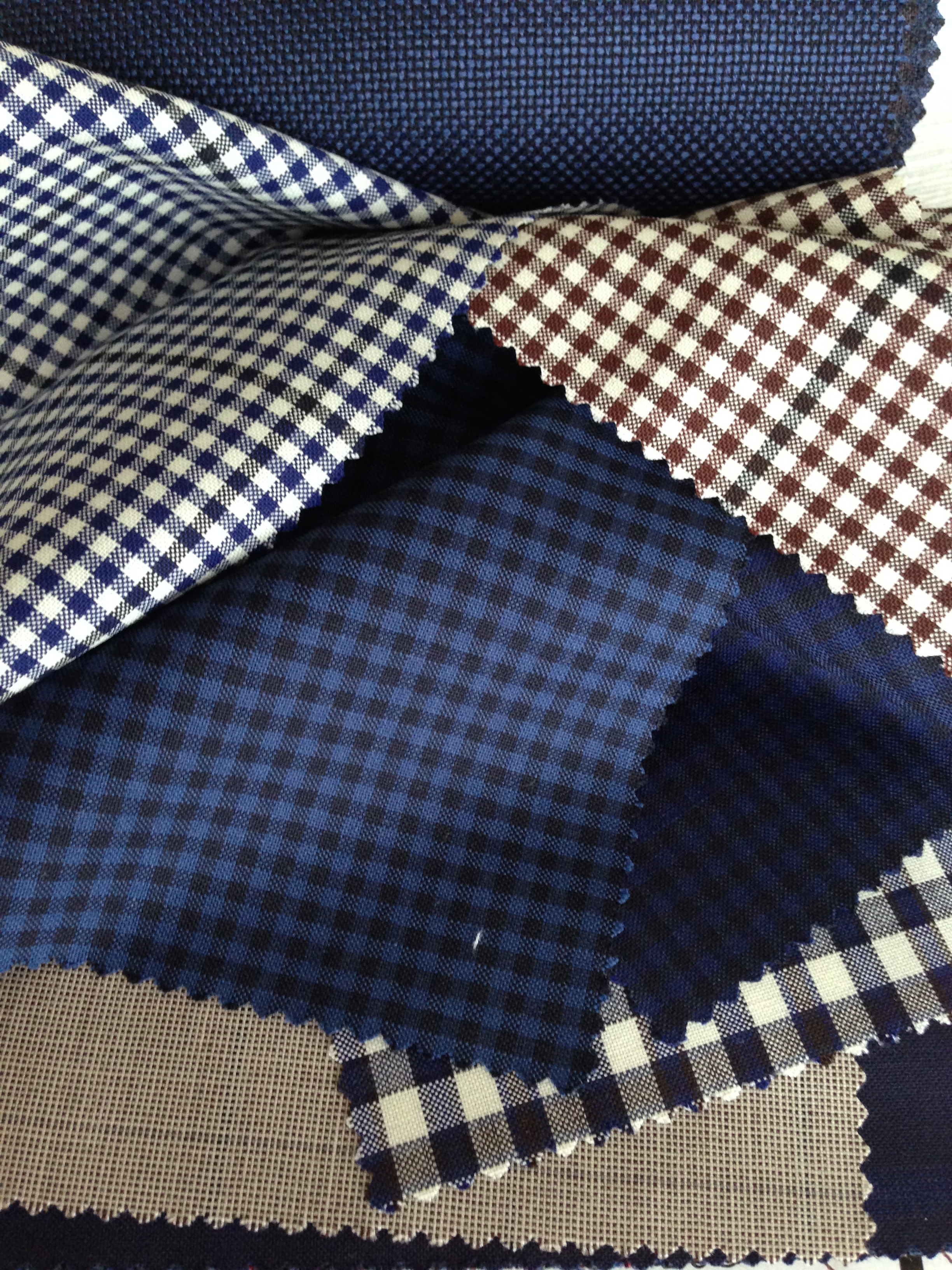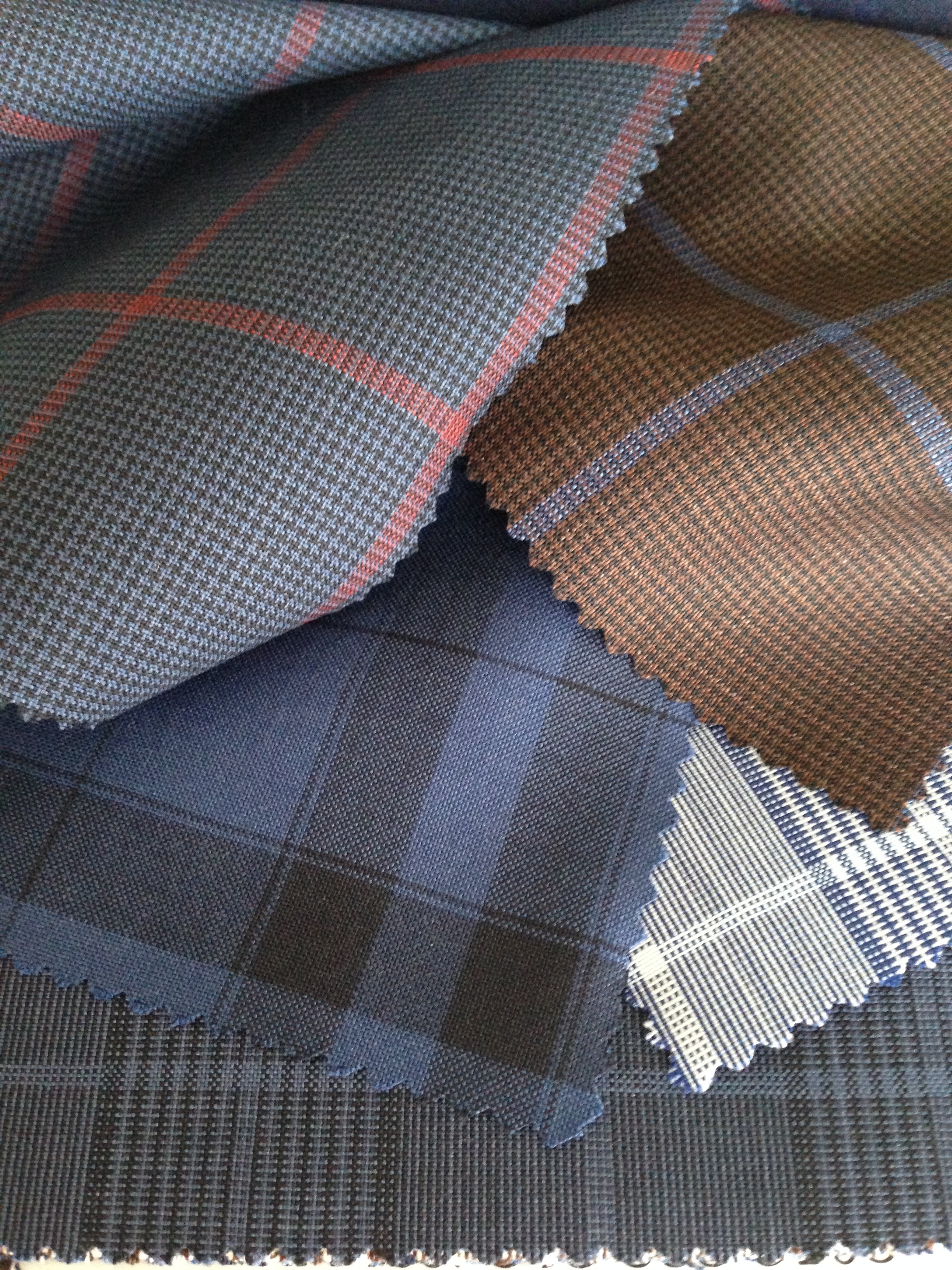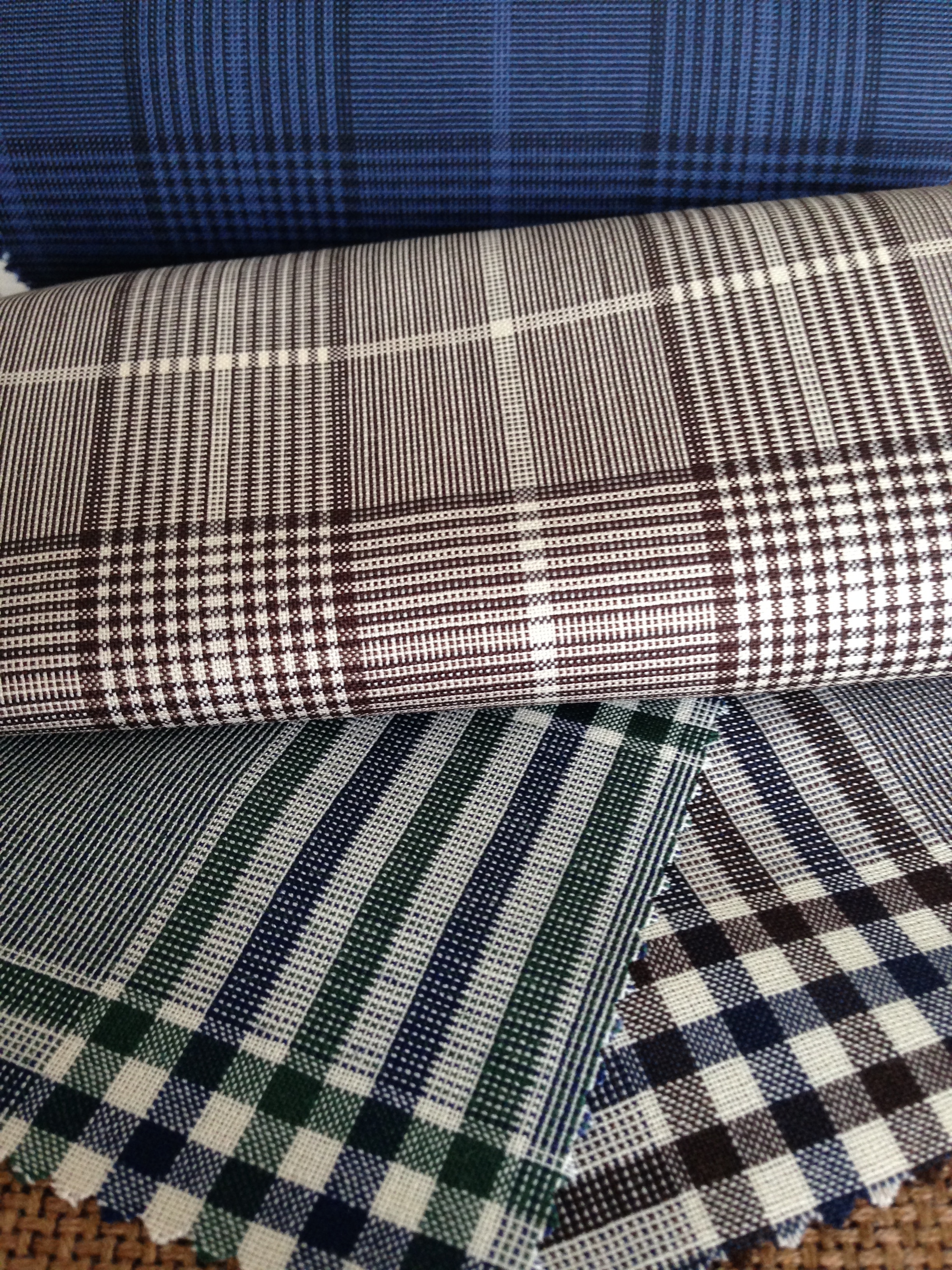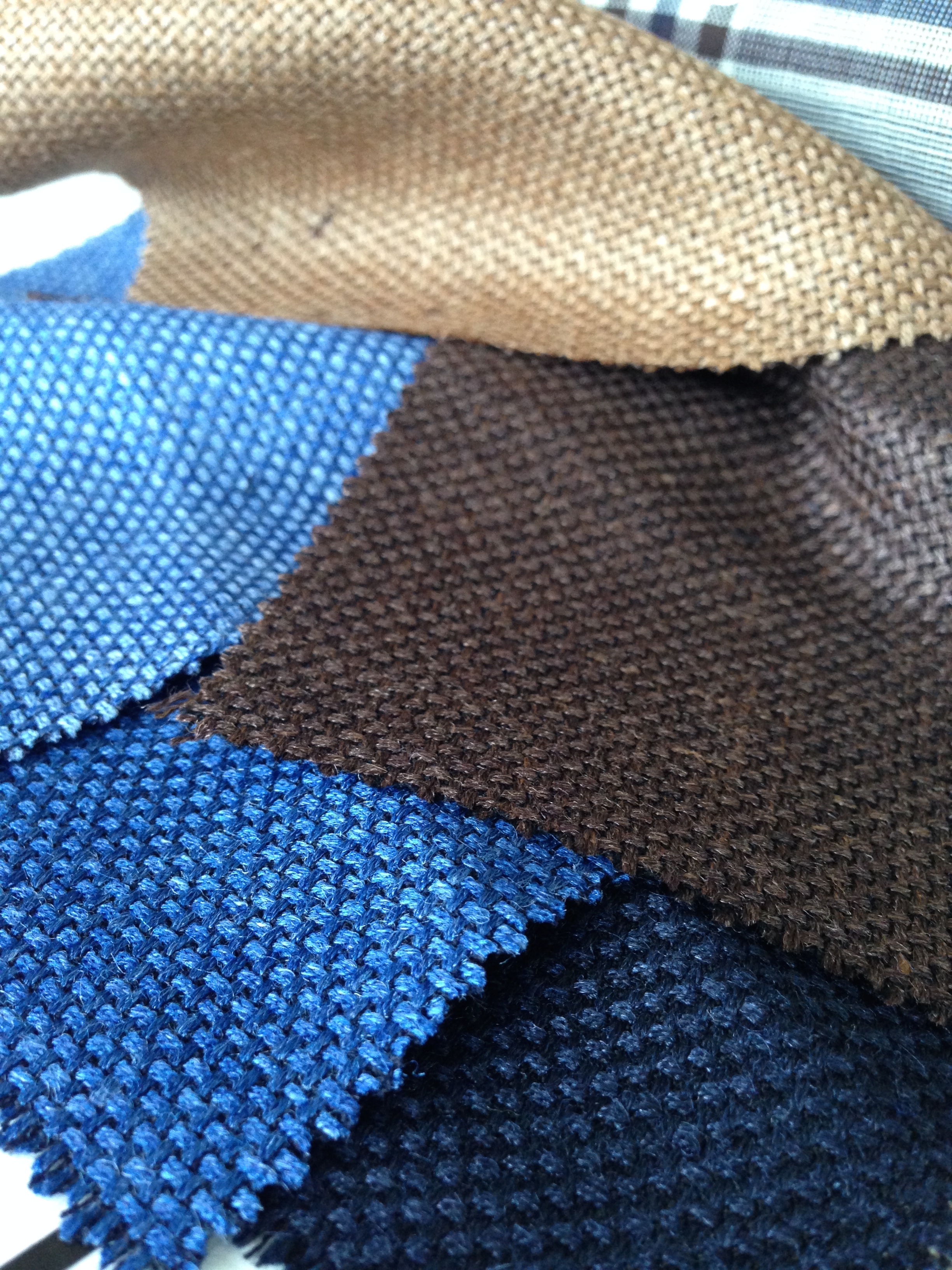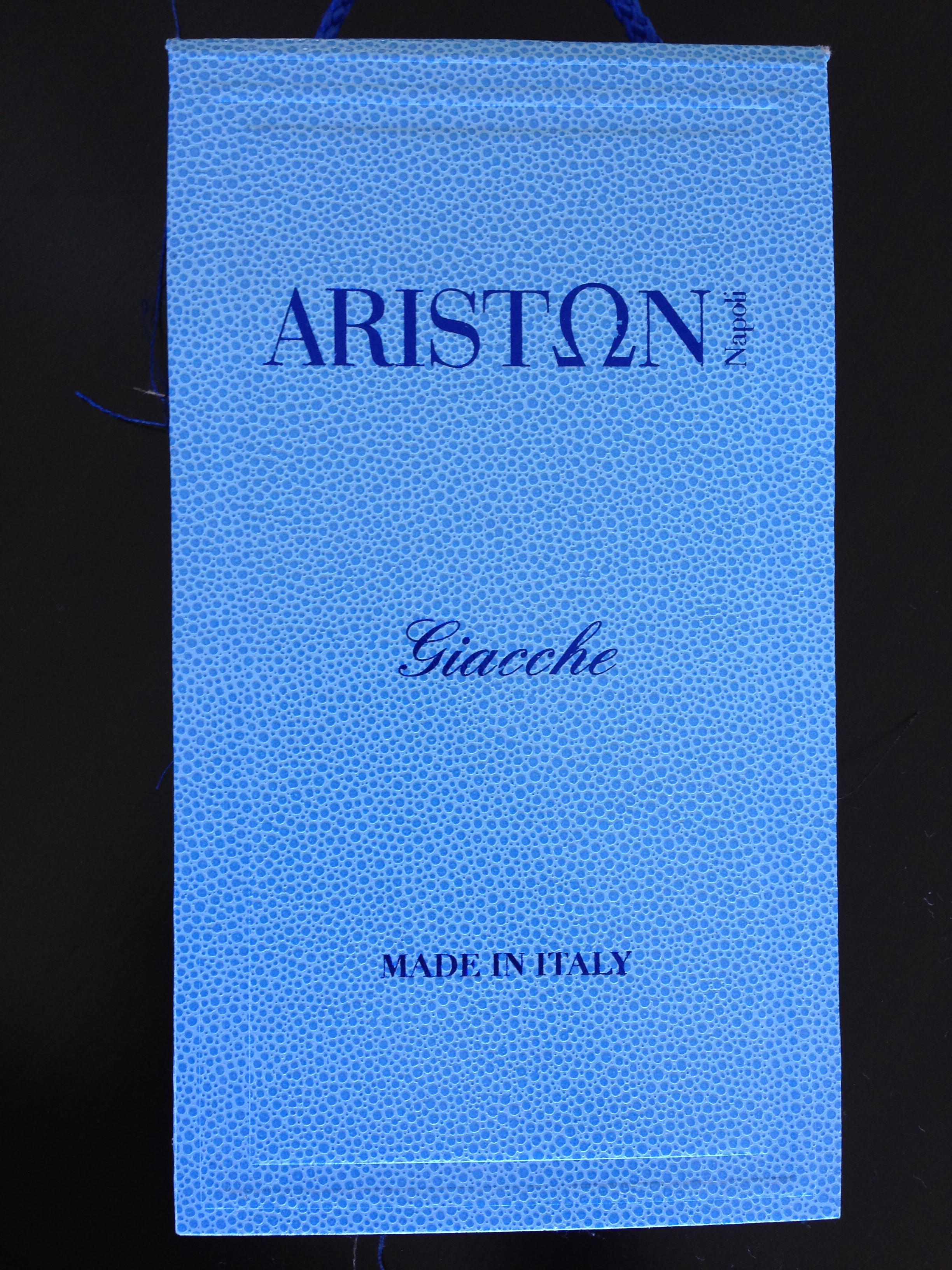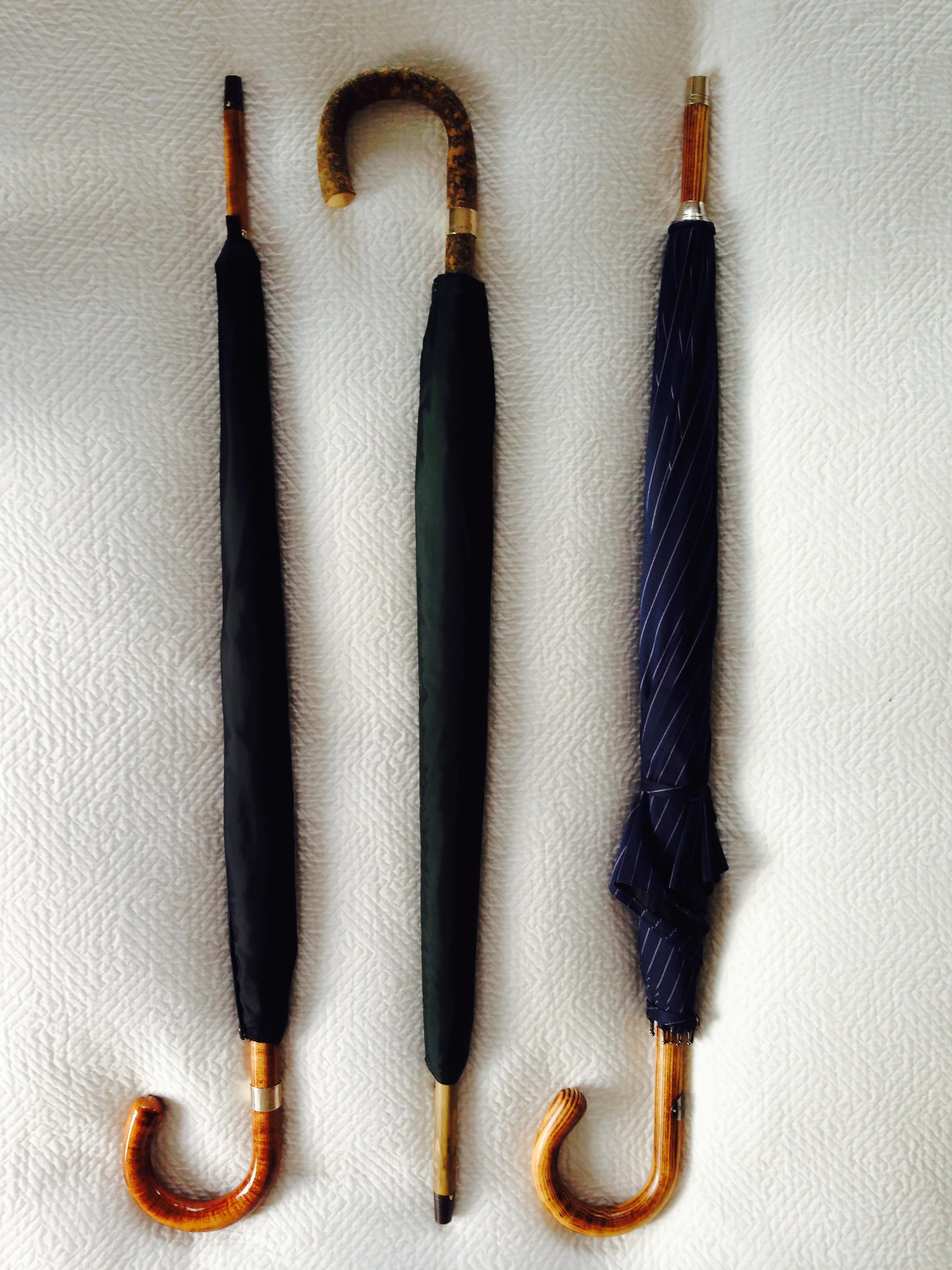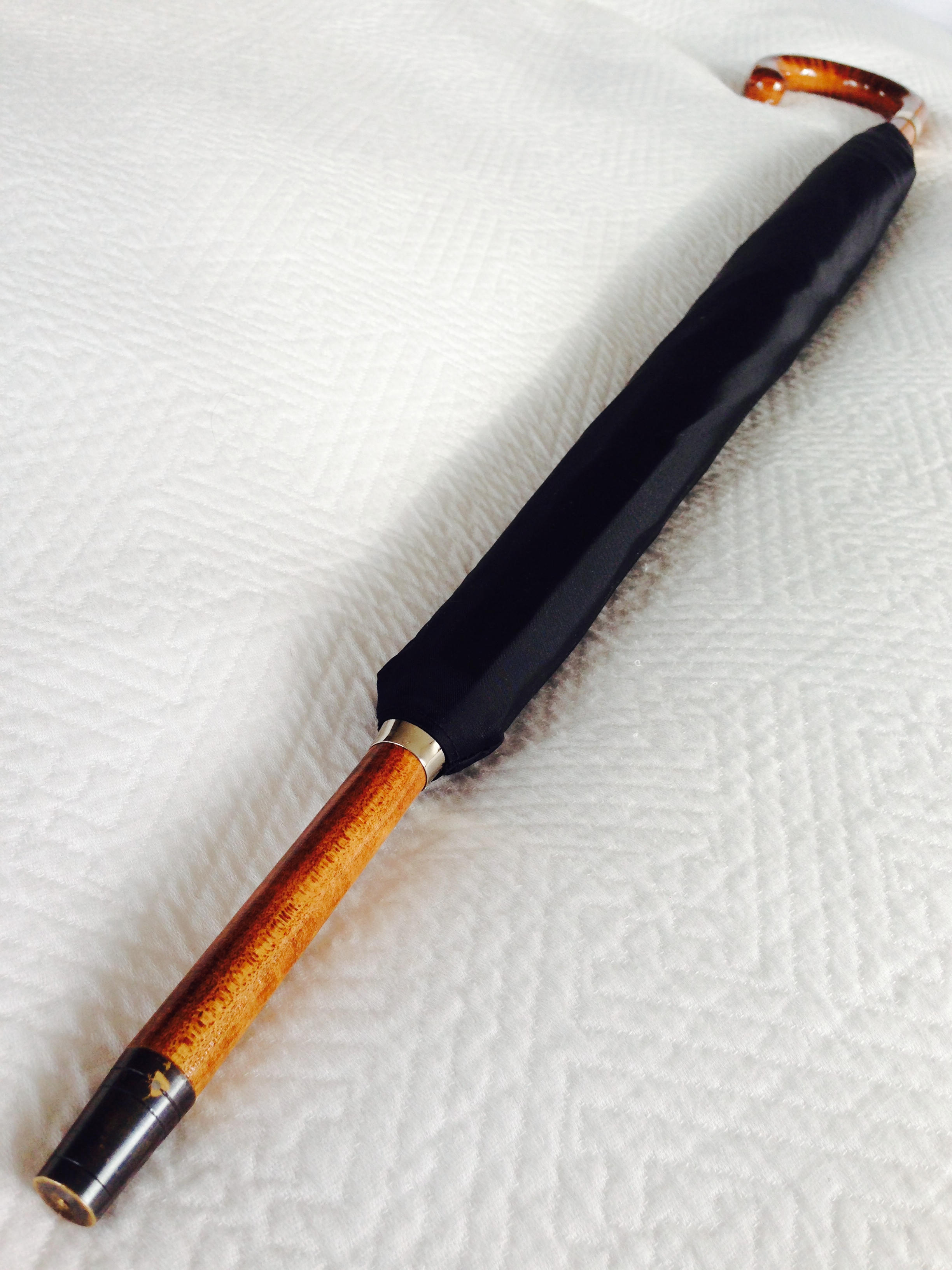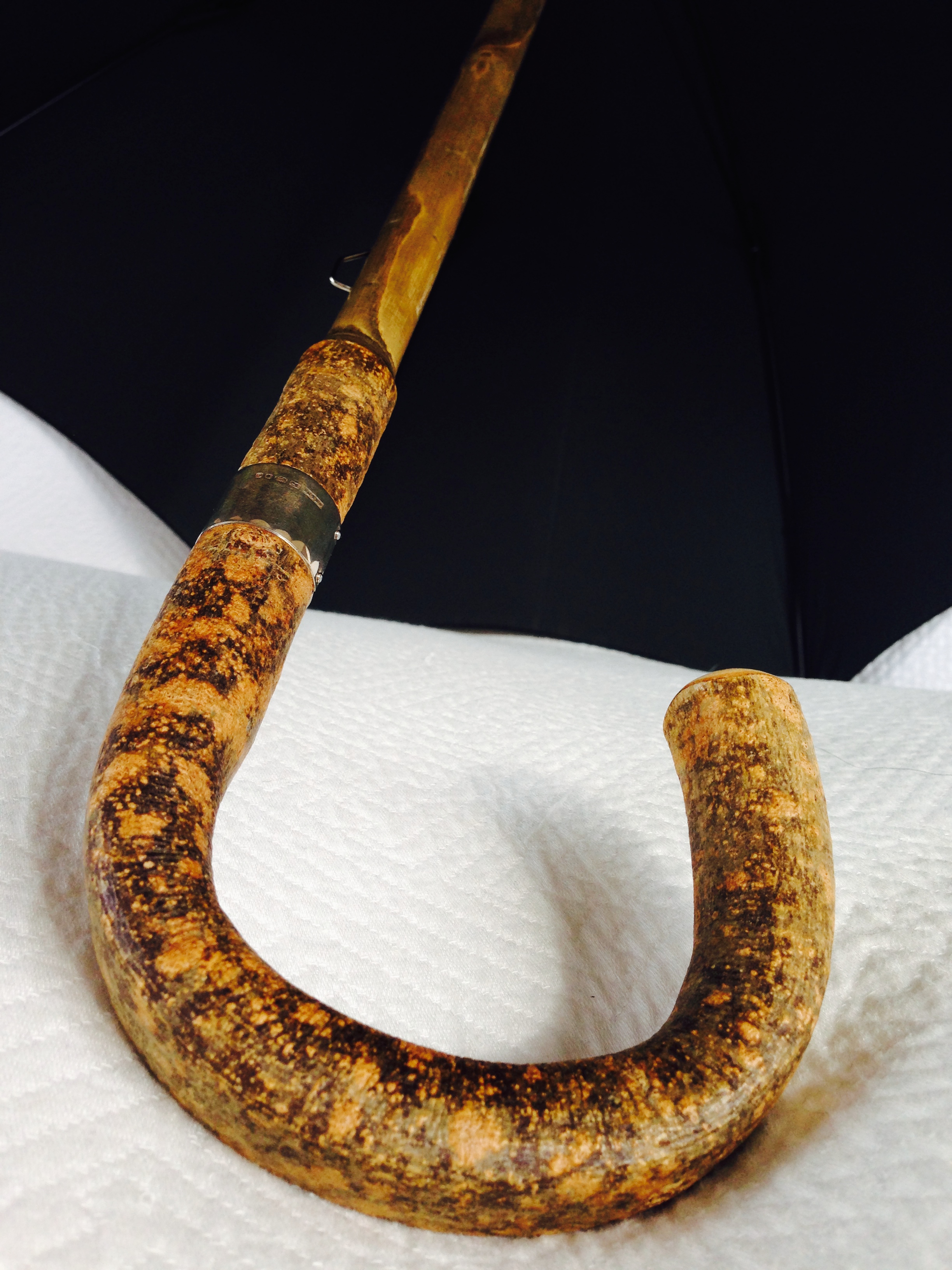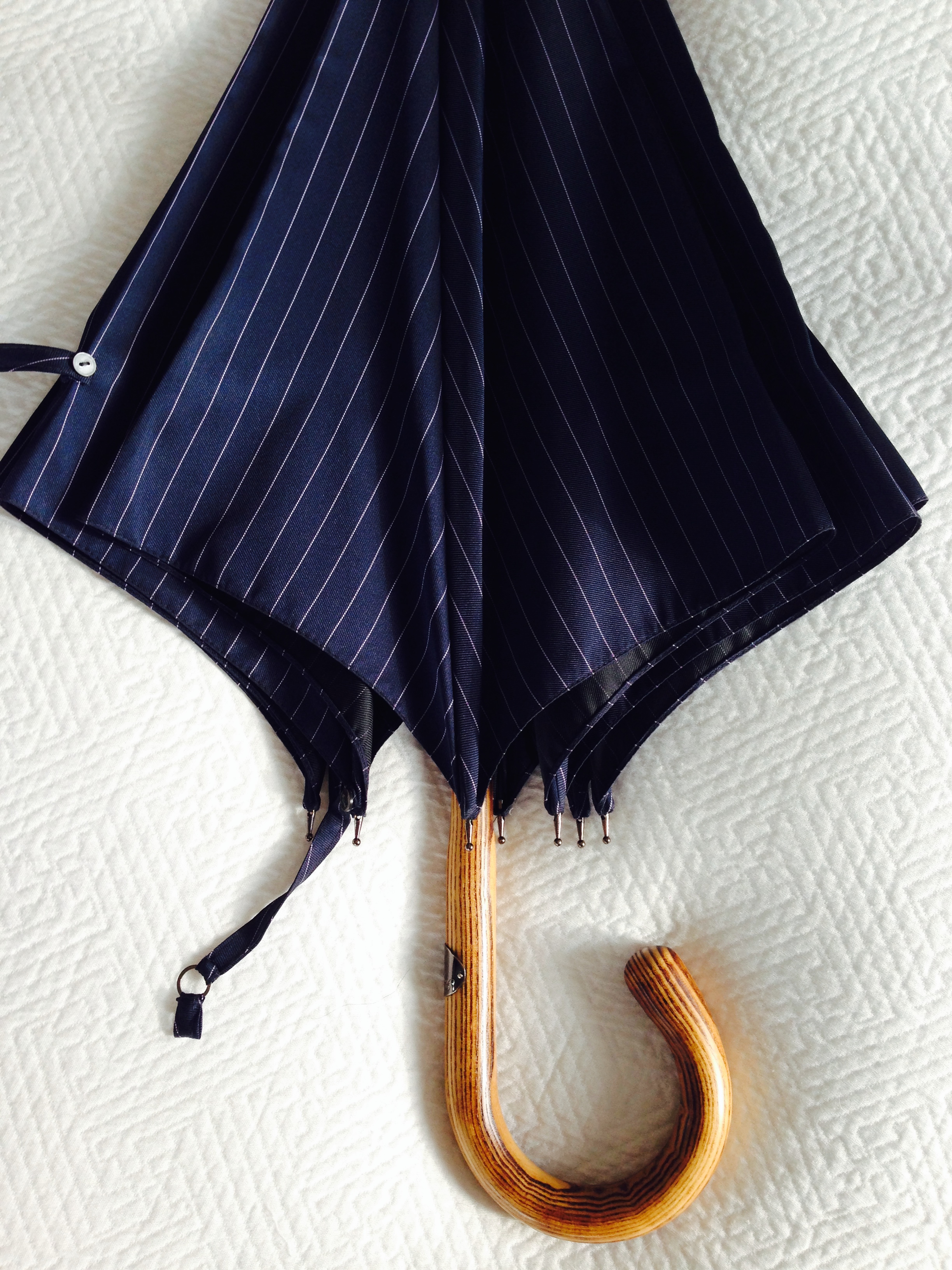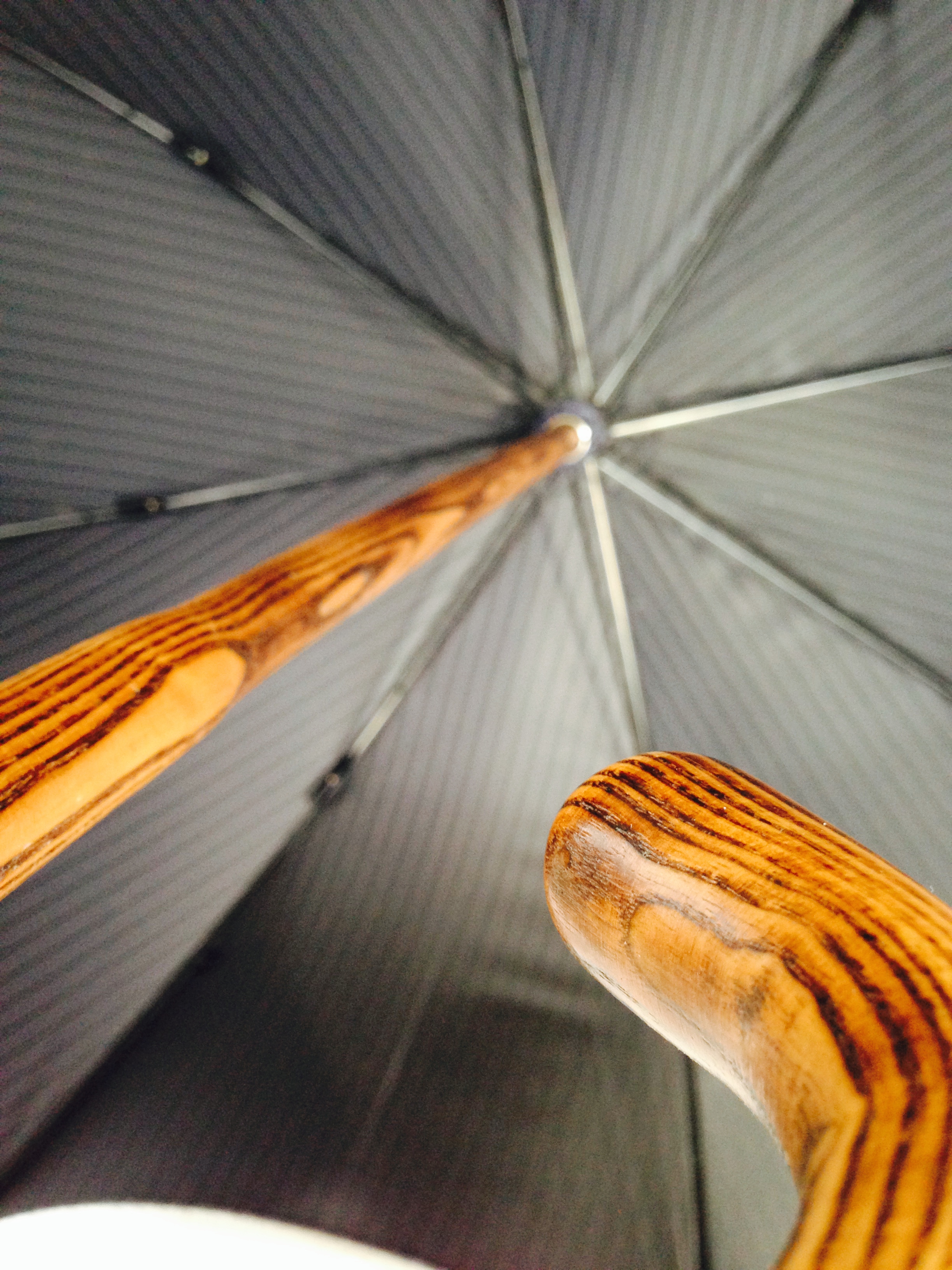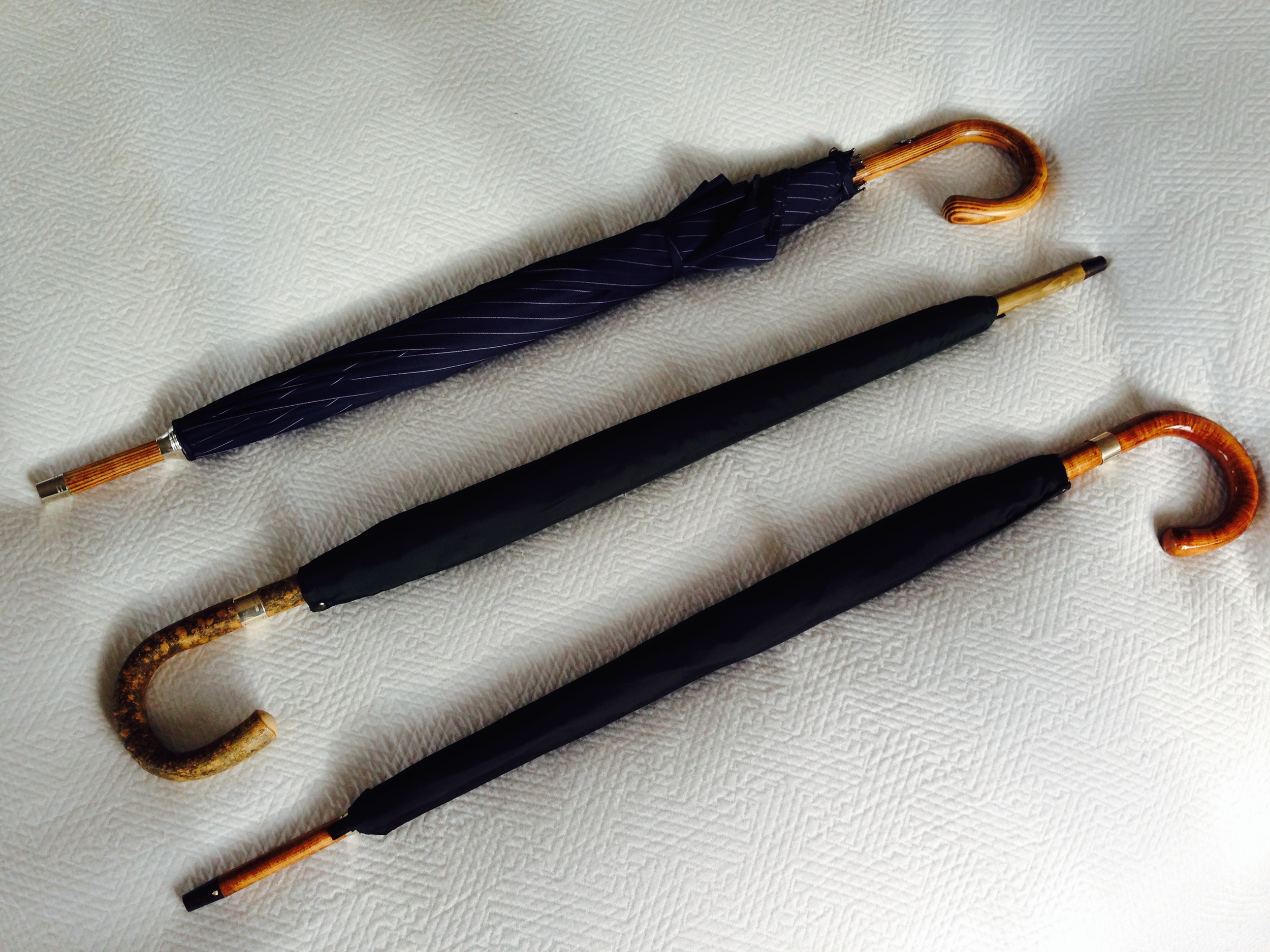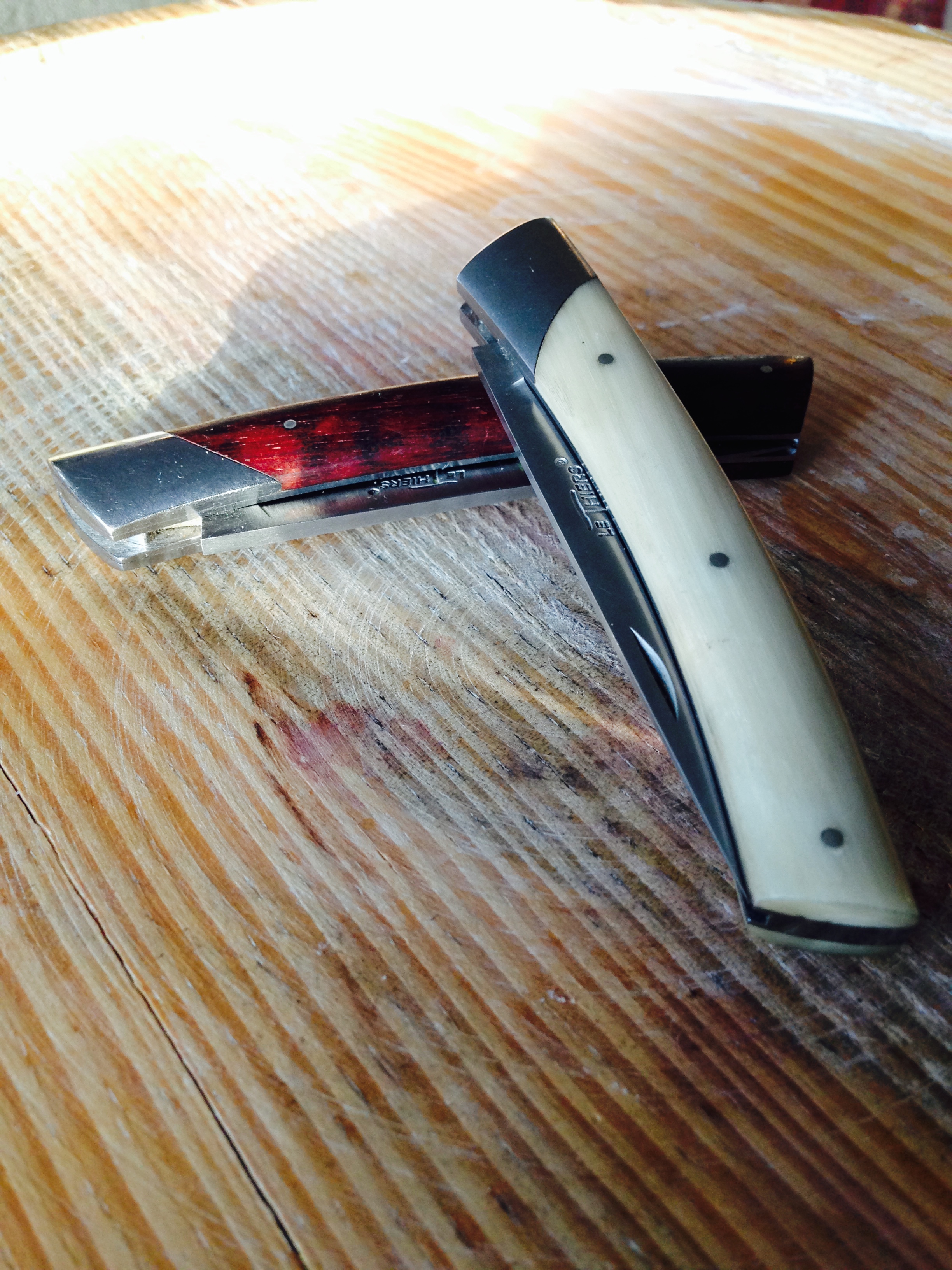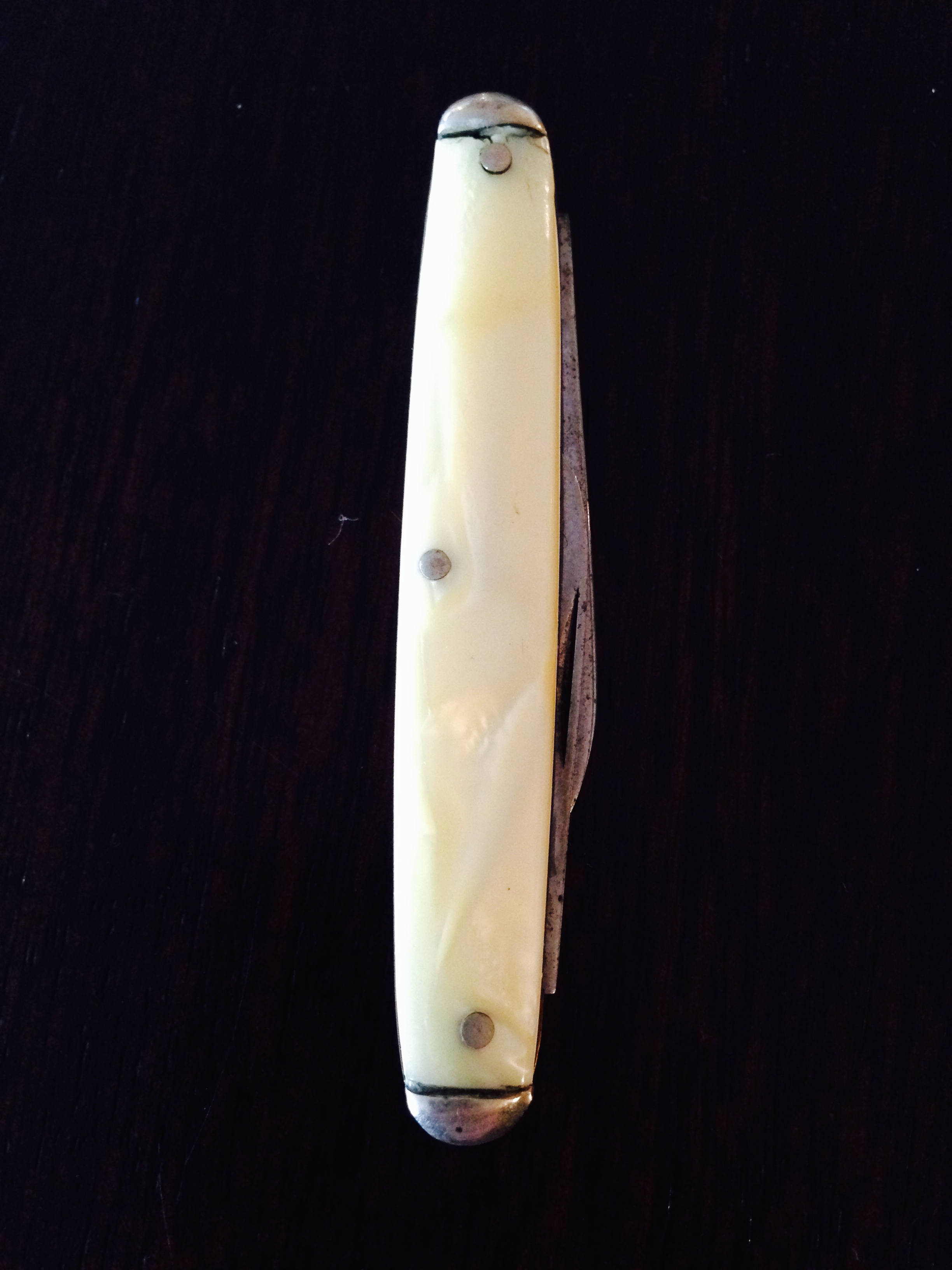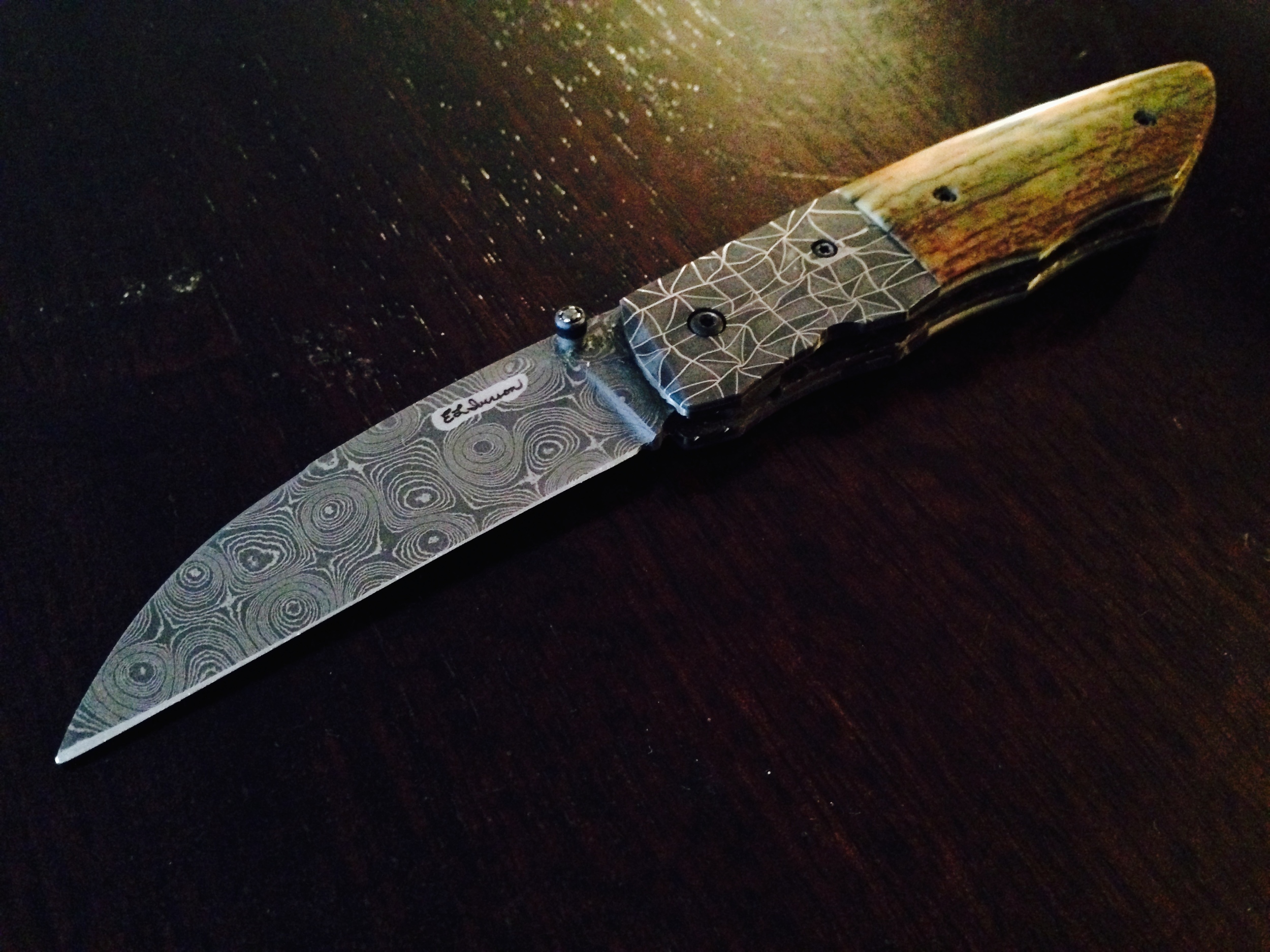Learn Your Stripes
From left to right, pin, dress and hair stripes.
The other day during a final fitting for two warm weather but very different suits, I commented how well an evenly striped shirt seems to navigate a broad spectrum of colors, cloths and patterns. Chris Despos, breaking from his careful evaluation of sleeve length, agreed that a shirt wardrobe packed with that type of stripe is very versatile. But what is that type? What width? What colors? What weave? Stripes seem a familiar enough concept, but the moment a preference needs to be established an unwelcome portal is opened to the infinite and confounding reality of striped shirting.
Language, particularly when figurative, is part of the problem. To help parse the vastness of the genre memorable names have been assigned to some of the more familiar stripes. Some of these terms have documented histories; a butcher's stripe mimics the bold stripes found on the traditional aprons of London’s butchers, which, in turn, is said to have been inspired by the butcher’s guild coat of arms. But many are rather fuzzy: a university stripe seems to be nothing more than a candy stripe, and what precisely constitutes a bengal stripe? I now and again run across a useful guide, but the problem, of course, is that no real standardization exists. And why should it? Let a thousand flowers bloom etc., no?
Dress stripes with a small-patterned foulard: fool-proof.
I do have a very strong preference for one particular stripe. The one I was wearing during the fitting the other day is often known as a “dress stripe,” which, if it must be put into words, is a narrow (1/16’’), evenly alternating white and colored (shades of blue, typically) stripe in a plain weave. Read that again. It’s no surprise the term dress stripe is preferred, even if some vagueness is invited with its use.
If varying scale is really the golden rule behind combining patterns, the above dress stripe, or some slight variation, derives its greater versatility from its unique scale. It is small enough to read as a solid (or semi-solid) from even a few feet away, but any closer and it is a bonafide pattern. Crucially though, the same scale is rarely found in jackets, suits or ties and so remains small enough not to conflict with a larger scale pattern. In other words, jackets and ties tend to feature patterns either larger or much smaller in scale, framing the dress stripe without conflict. With six dress stripe shirts and as many foulard ties, one could dress confidently in the dark for days on end. Perhaps that’s the origin of the name?
Finally, be prepared that insisting on a particular width, repetition, weave, shade and number of colors will make you seem unreasonably particular. So be it; getting what is most versatile, is, for me, the only way to justify the higher cost of having shirts made. And while understanding why certain patterns are more versatile is helpful, I have learned the following general principles that should help to quickly determine preferences within the infinite variety of striped shirting.
Dress stripes demonstrating versatility, working equally as well with a repp double stripe tie.
Don’t trust colorful names: one man’s bengal is another man’s butcher’s (and that's without considering awning and barber’s stripes).
The more white or the paler the stripe color, the subtler the shirt.
Conversely, the bigger and/or bolder the stripe the more casual the effect.
Evenly spaced stripes are less jarring than unevenly spaced stripes.
Stripes in colors other than blue produce very memorable shirts. This is not always desirable.
Multi-stripe shirts with stripes in different widths and colors are for experts; proceed with caution.
The most useful shirting is probably a mid-blue and white dress stripe.

















